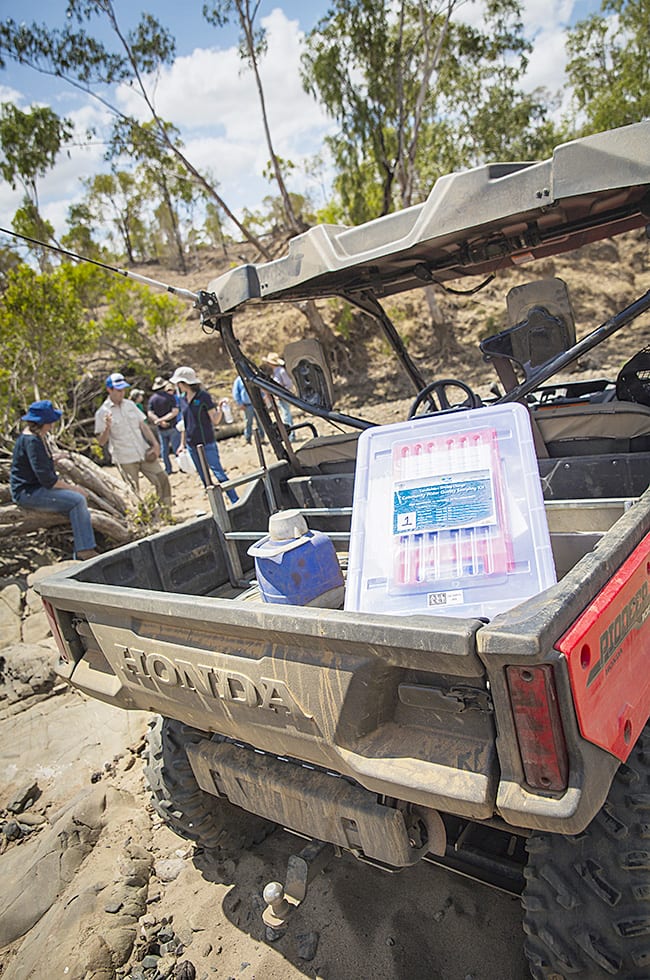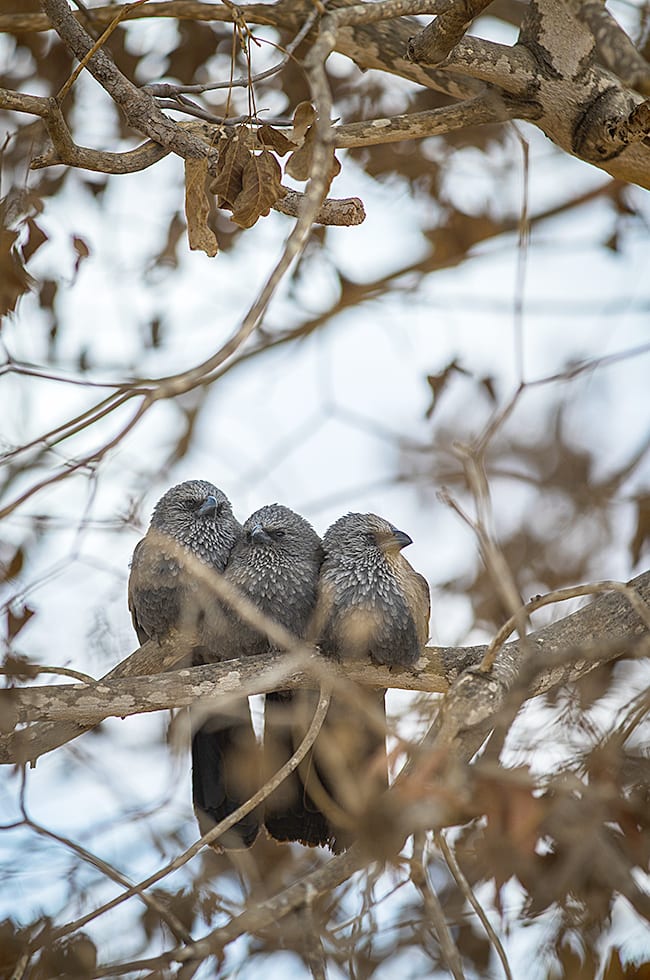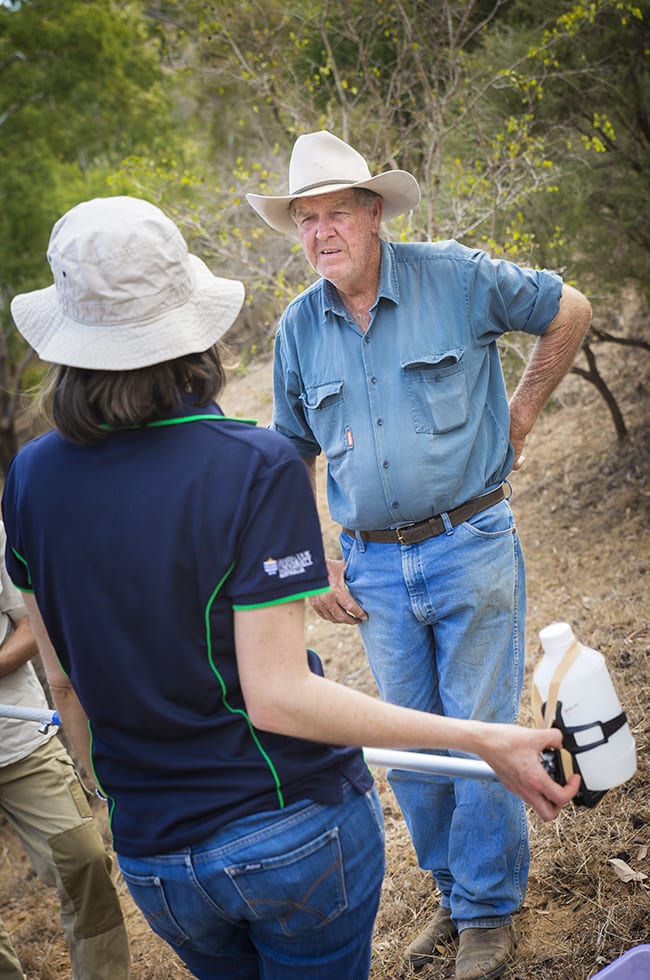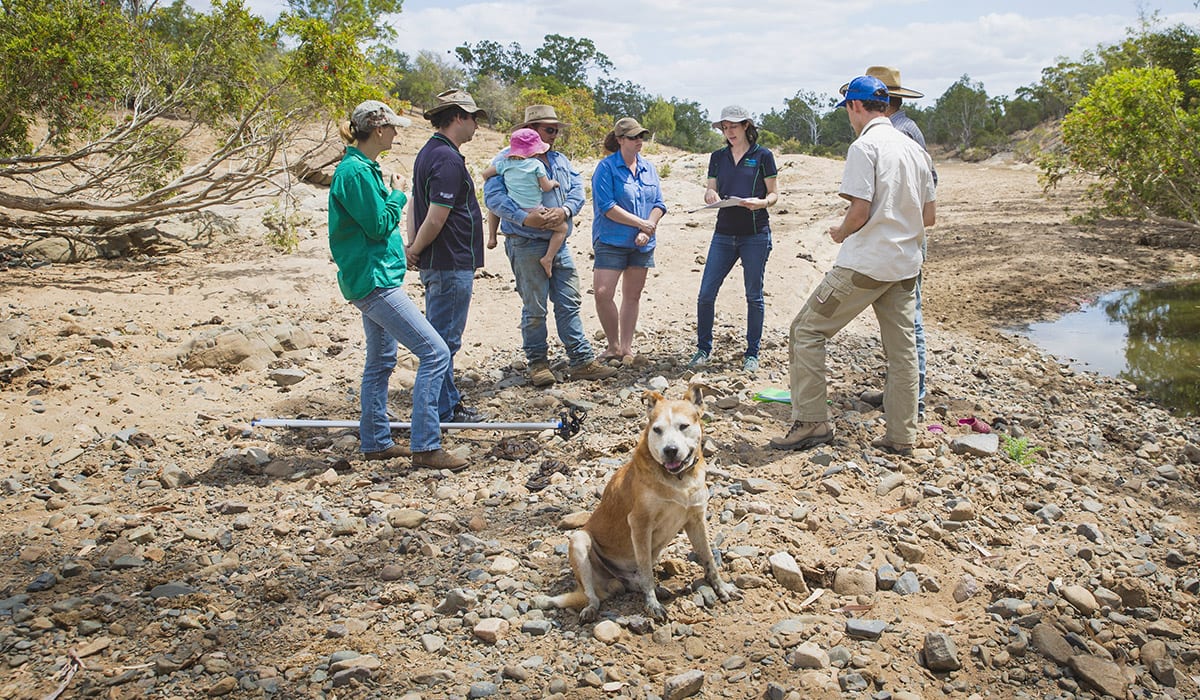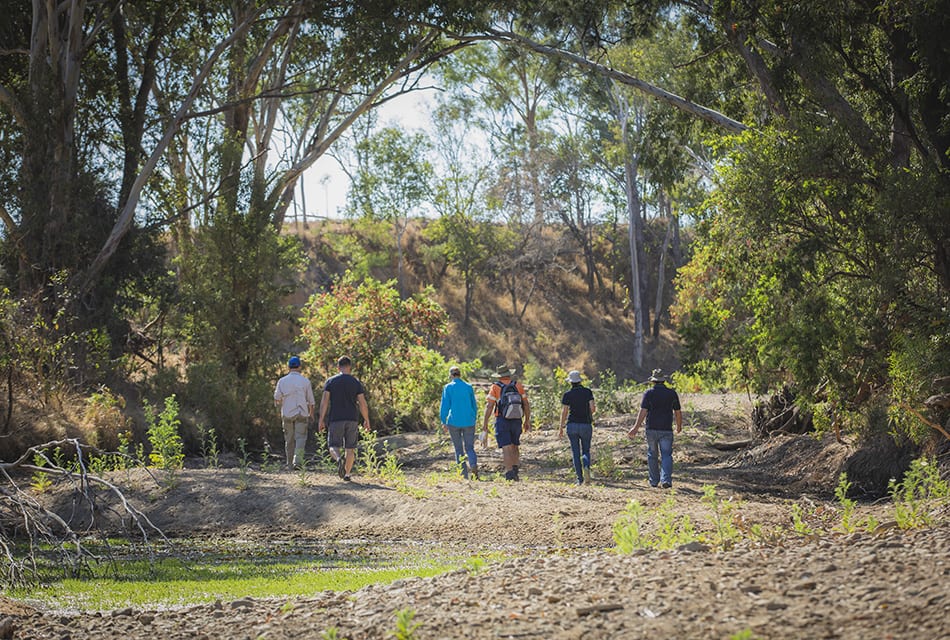Data dinner date for BBB Water Quality Monitoring group
- Thursday, 6 June
- Pit Pony Tavern
- Starts 5.30pm, invitation only event
THE Centre for Tropical Water and Aquatic Ecosystem Research (TropWATER) trained local landholders on how to collect and store water samples in September. Since then, they have successfully collected water samples on nine properties selected in the Bowen, Broken, Bogie (BBB) catchment area.
When ex-Cyclone Penny made its way across part of the region in early January, four properties captured water samples at monitoring sites as the flow started, again at its peak, and, as water levels fell.
Between members of the monitoring group and the material collected from automated sampling sites, a total of 106 water samples were taken.
Details of the date, time and water level in the stream were recorded on field sheets and the samples stored in fridges and freezers until they are collected and analysed in the lab.
Scientists Steve Lewis and Zoe Bainbridge from TropWATER will share what they learned from the data gleaned from the samples collected by landholders at a dinner event that will be held in Collinsville this month.
Each landholder will be given the opportunity to discuss their individual results in detail with the scientists.
The samples taken by automatic samplers is being analysed by the CSIRO and that data will be delivered to landholders in the new new financial year.
The Community Water Quality Monitoring Group data is collated by the NQ Dry Tropics Paddock to Reef coordinator to help strengthen the Queensland Government modelling for the program.
With substantial investment and action underway to improve land practices, water quality and reef health, the Paddock to Reef program tracks the work of many stakeholders by monitoring progress towards ambitious reef targets.
One of the key strengths of the local monitoring group is that by taking water samples themselves, landholders can learn from that water quality information and take the information back to the BBB grazing community and collectively, work out ways to improve local water quality.
Not only can local knowledge be put to good use, community-based monitoring broadens traditional scientific approaches and enhances social capital by strengthening the bonds within the community and with government.
This is why it’s important that scientists are involved with the LDC project, linking science with landholders in a way that enables research to be adapted and packaged in a more meaningful way for all Great Barrier Reef stakeholders.
It ensures landholders’ decisions and actions about land management practices are based on best available knowledge. It also opens the way to landholders’ knowledge and innovation complementing the formal science.
What is Paddock to Reef?
The Paddock to Reef Integrated Monitoring, Modelling and Reporting Program (Paddock to Reef program) is a collaborative program designed to collect and integrate data on agricultural management, catchment indicators and loads, and the health of the Great Barrier Reef.
Data is collected and reported across six reef regions and results are then published in a report card.
This program measures progress against the water quality targets and actions under the Reef 2050 Water Quality Improvement Plan.
Jointly funded by the Australian and Queensland governments, the Paddock to Reef Program also involves collaboration with industry bodies, regional natural resource management groups, landholders and research organisations.

